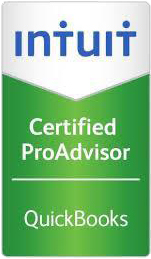The Paycheck Protection Program Extension Act of 2021 was signed into law on March 31, 2021, extending the deadline to apply for a loan by an extra 60 days, from March 31 to May 31, 2021. The law also gives the Small Business Administration (SBA) an additional 30 days after the May 31 deadline to review and process loan applications.
The passage of the PPP Extension Act does not provide additional funding; however, as part of the American Rescue Plan Act, an additional $7.25 billion was earmarked for the Paycheck Protection Program to expand eligibility to additional nonprofits and digital news services.
In February 2021, SBA also made four additional changes to open the PPP to more underserved small businesses, generally small and low- and moderate-income (LMI) businesses who have not received the needed relief a forgivable PPP loan provides. Congress set a $15 billion set-aside for small and LMI First Draw borrowers. To advance these goals, SBA has:
- Allowed sole proprietors, independent contractors, and self-employed individuals to receive more financial support by revising the PPP’s funding formula for these categories of applicants
- Eliminated an exclusionary restriction on PPP access for small business owners with prior non-fraud felony convictions, consistent with a bipartisan congressional proposal
- Eliminated PPP access restrictions on small business owners who have struggled to make student loan payments by eliminating student loan debt delinquency as a disqualifier to participating in the PPP
- Ensured access for non-citizen small business owners who are lawful U.S. residents by clarifying that they may use Individual Taxpayer Identification Number (ITIN) to apply for the PPP
Prior to addressing these inequities, the current 2021 round of PPP loans had only deployed $2.4 billion to small LMI borrowers, in part because a disproportionate amount of funding in both wealthy and LMI areas is going to firms with more than 20 employees. As a result, in February 2021, SBA established a 14-day, exclusive PPP loan application period for businesses and nonprofits with fewer than 20 employees. The program opened to all borrowers on March 10, 2021, and, as mentioned, has been extended through May 31, 2021.
Business owners who have not received a PPP loan previously can apply for a First Draw Loan. Certain businesses that have already received a PPP loan are eligible for a Second Draw PPP loan.
Finally, borrowers may be eligible for PPP loan forgiveness. First Draw PPP loans made to eligible borrowers qualify for full loan forgiveness if during the 8 to 24-week covered period following loan disbursement:
- Employee and compensation levels are maintained.
- The loan proceeds are spent on payroll costs and other eligible expenses; and
- At least 60 percent of the proceeds are spent on payroll costs.
Second Draw PPP loans made to eligible borrowers qualify for full loan forgiveness under the same requirements as First Draw PPP loans provided employee and compensation levels are maintained in the same manner as required for the First Draw PPP loan.
If you are thinking about applying for a PPP loan, don’t hesitate to contact the office with any questions.




